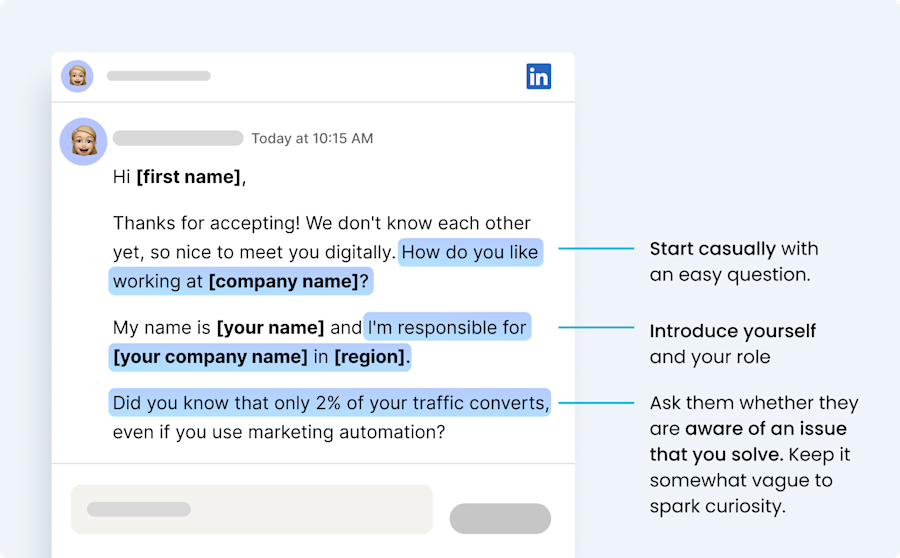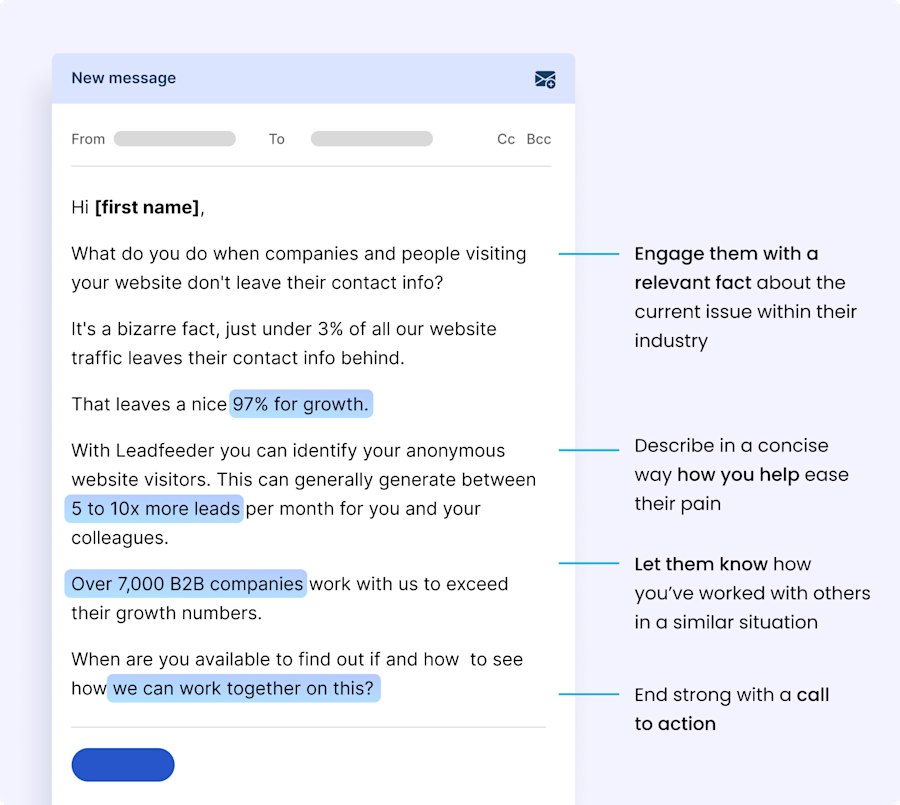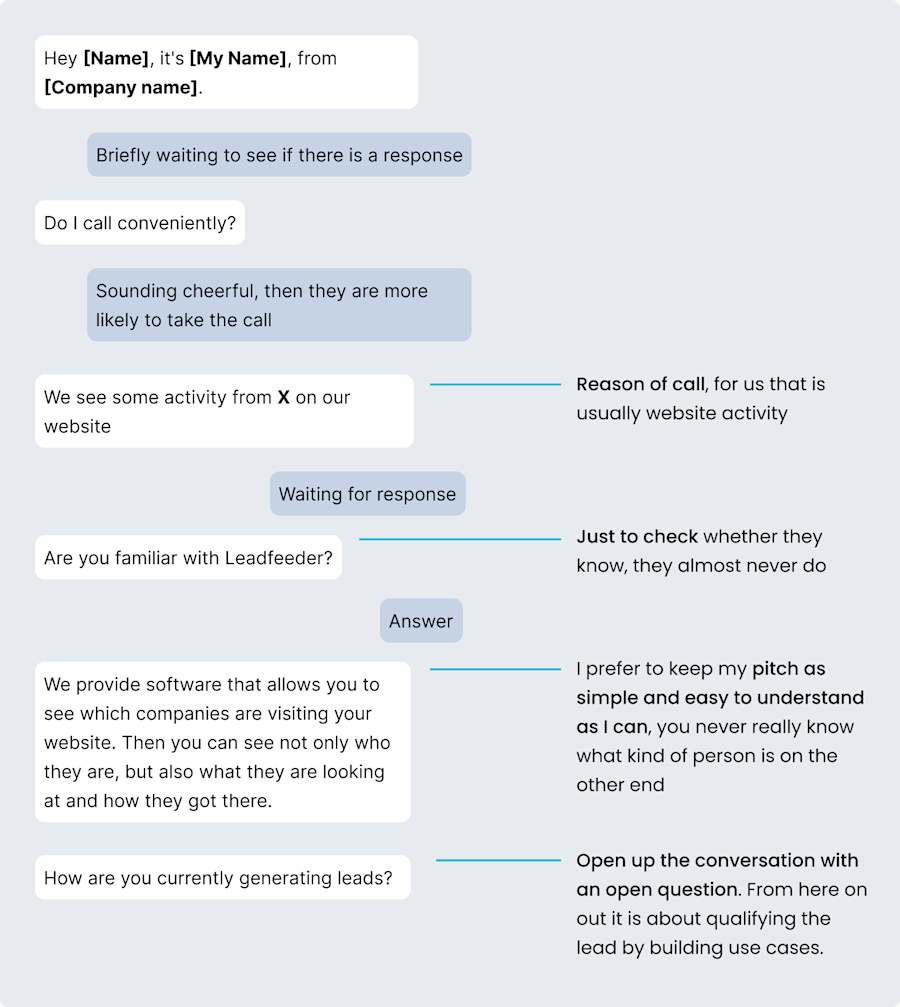In a fragmented digital world, a well-crafted multi-channel sales strategy has become the new norm for B2B outbound sales teams.
You explore new platforms and tools to land new clients, close more deals, and increase your digital presence. You might be wondering, what channels should my B2B sales team use to attract new leads?
Today, I’ll explain what multi-channel outbound sales are, the difference between single-channel and multi-channel, and the pros and cons. I will also share some valuable market stats on the topic and — most importantly — templates for an increased response rate among the different channels. Let’s get to it!
What are multi-channel outbound sales?
Outbound sales reps sell products or services to potential leads. Sales reps can use cold calling, cold emails, texting (SMS), and social media as their primary sales channels.
Now, when you only use phone calls to reach out to prospects, you use a single-channel outreach method. On the other hand, when you use multiple channels (email campaigns, phone calls, social media, and offline activities) to do the same, you’re now working in a multi-channel way. The two approaches have their own use cases, metrics, touchpoints, and, of course, pros and cons. Observe.
Multi-channel vs. single-channel outbound sales
Whether we go for a single or multi-channel approach depends on the goals and strategy. To help you make an informed decision, I’ve listed the most and least favorite aspects of both.
Advantages of using multi-channel prospecting
As the definition of multi-channel sales suggests, you use several communication channels to reach out to your prospects, increasing our chances to get in touch with them. Here’s how a multi-channel strategy benefits your business.
Wider outreach. Going multi-channel helps reach decision-makers in their preferred way and provides us with more opportunities.
Actionable analytics (and customer insights). Multi-channel sales outreach provides data on where prospects are most engaged and hints at the channels that need an upgrade or change.
Consistent, personalized prospect experience. Using a similar message across many platforms creates a unified view of your brand.
Focus on different pools of decision-makers. Prospects use some channels more often than others. For example, LinkedIn, with its over 830 million members, is the go-to platform for professional networking. But if you believe your prospects are too busy for social media, you can always go for cold calling or emailing instead.
It’s safe to say that the multi-channel approach to sales has many advantages. What about the single-channel one?
Advantages of using single-channel outbound sales
Single-channel sales prospecting may not be used often nowadays, but it still has its pros.
Focus on a specific group to win with quality. If you choose email marketing only, research its ins and outs. It will help you come up with the best strategy to present your company name to the most suitable lead pool.
Maximum use of your strongest marketing skills. Some people are extremely good at making cold phone calls, while others would gladly craft case studies alone at their computers. If you use this asset to target a specific group of people, your deliverability will increase.
Of course, both approaches also come with side effects, so let’s take a look at the cons of single-channel and multi-channel sales.
Disadvantages of using multi-channel outbound sales
Going all-in with multi-channel outreach can backfire in ways you might not expect. Here are a few common challenges you have to be aware of.
Requires a lot of time. Going multi-channel means you have to be in different places at once, juggling accounts and messages. Fortunately, there are special platforms that allow you to manage various channels from a single app and even analyze the performance. All hail automation!
High probability of being blocked. If you bombard people with aggressive sales sequences in every medium, they might block you — and you don’t want to find your company on the blacklist.
Don’t worry though. A well-crafted, flexible sales strategy will address these multi-channel challenges and help overcome them. And what about single-channel?
Disadvantages of using single-channel outbound sales
Single-channel outreach has what IT people call a single point of failure. If the crucial part of software fails, it takes down the whole system. Same here: if anything goes wrong with your only channel, your activities will be suspended. But that’s not the only thing to worry about.
Using the wrong channel for the right people. Since it’s your only channel, you’ll lose time, money, and prospects that could be easier to convert if you chose another one. This is why the current trend is to choose several sales channels to not miss out on the opportunities each of them presents.
Limited flexibility. If you can’t flexibly adjust your sales strategies and switch to a new channel friction-free for your clients, somebody else might take your place.
I know what you’re thinking, and you’re right: in the volatile world of modern sales, putting all your eggs into a single basket doesn’t seem like the best idea.
The choice of single or multi-channel outreach will depend on your budget, sales team skills, and the goals you pursue. It is true, however, that businesses tend to use more channels to increase conversions and close more deals. There are a few other reasons why multi-channel sales will – and should – remain topical.
Why outbound sales needs to go multi-channel
Outbound sales can be compared to fishing. A single-channel approach is using one small rod, multi channel is using a wide net. Naturally, you will catch more fish with the net than with just a single fishing rod.
The same with multi-channel. You will process more leads via various channels simultaneously if you have researched your target audience well. But widening one’s communication channels is not the only reason to go multi-channel. Why else should you do it?
To influence the buying decisions of more B2B clients. The number of channels clients prefer to use while making decisions has increased twofold in five years — from five channels in 2016 to ten in 2021. So, the more channels you use, the more opportunities you have to influence this decision.
To keep your sales strategy flexible and ongoing. Adjusting to new realities is so important in sales, and having multiple channels will make this process less painful. Does your lead boycott Facebook? No worries, you can reach out to them on LinkedIn or use their phone number to chat.
Now you know that multi-channel sales have a lot of benefits, and you’ve learned how to deal with the challenges. What’s left to start your new outbound sales campaign is choosing the right channels — and we’ve got a couple of tips for you.
Outreach must-have channels for outbound sales
According to McKinsey, B2B buyers use up to ten channels to interact with potential suppliers online. Here’s how the list of preferred channels has changed over time, from 2016 to 2021:

Of course, you should choose the channels your target audience uses. But if you ask me, these are the best ones for first outreach.
LinkedIn outreach is a powerful tool for outbound B2B marketing and finding businesses that might be interested in your services. Stats claim that in 2021, 81 percent of marketers used their LinkedIn profiles to market their businesses. It was the second-most popular social media platform among B2B marketers worldwide — the first one being Facebook (89 percent).
You can use LinkedIn to send direct messages, interact with the content your leads share, and learn more about them. All this will help you approach them with a powerful and very personalized message.
We actually have several excellent articles on how to do high-performing outreach via LinkedIn and create your outbound strategy. You should check them out.
Pro Tip: Use templates to reach your prospects with a personalized message quickly.

Important note: Linkedin is often used on prospects further down in the mail cadence. We want it to be as likely as possible that they know our name, even if it is just a little. Shout out to my colleague Sjoerd who has been more successful than me on his Linkedin prospecting!
When it comes to presenting your company to a new lead, few things are more important than the first email written well.
First, you can include a lot of information your prospect might find helpful. Second, leads can open them at any convenient moment for them, so that they won’t feel pressured. Finally, emailing is still free. Plus, you can use email tracking software to see if the recipient opened it.
Pro tip: Use valuable content that can help your prospects with their tasks or give them unique insights about the market. Here’s an email template you can use as a reference to customize your emails.

Phone
People with the calling skills of the Wolf of Wall Street are rare. This isn’t surprising: phone calls are the most stressful channel of outbound marketing for most of us. You don’t have much time to think about the best answer, you should be direct and listen to your lead actively. And that’s IF your lead picks up.
The reality is, your phone call might be “missed” because many people today prefer texting or emailing. But don’t take it off the list completely — calling is still a powerful channel to connect with those leads who showed some interest. And here, your charm and voice will help “personalize” the brand in their mind and establish trust.
Pro tip: Follow your script but let it flow naturally. And don’t try to sell anything on the spot — calling is a discovery phase, so ask questions to see if the prospect is a good fit, learn about their business and needs, and don’t push demos.

These are my top channels to use for your first contact. But what can help keep your leads engaged? I have a few tips in mind.
Channels to use to keep lead engagement going
A successful first outreach means nothing without a solid follow-up strategy to maintain the prospect’s involvement and interest. And for this, you might need to add a few new channels. Here’s what I recommend to continue with.
Texting someone on WhatsApp is even more personal than shooting a message on LinkedIn, but once you have someone’s private number, respect their privacy. Keep in touch with your prospects according to your schedule, ask how their things are going, but keep your distance and use common sense.
Remember that you’re talking as a human to another human, not as a brand to a business. People always sense when someone tries to sell them something right away or is way too friendly for someone they’ve never seen, so here you need to find middle ground between impersonal and creepy.
Offline events
In-person meetings and networking are much rarer today than before the pandemic but never miss a chance to go when you can. You can meet a lot of prospects at conferences, workshops, presentations, and other events.
Real-life meetings are always a great way to connect with your leads faster, build trust and relationships, and find new business partners.
Multi-channel outbound sales can be overwhelming — Leadfeeder makes them easier
You cannot go wrong with a multi-channel sales strategy to reach new leads in such a fragmented digital world. Adding several of the most effective channels to your sales pipelines helps you research your leads better, generate demand, and improve visibility. Plus, you can use more channels to influence your prospects’ buying decisions, build long-term relationships with them, and grow brand awareness.
At Leadfeeder, we help our clients build the multi-channel outbound selling strategy that perfectly fits their business and goals. How do we do it? By converting website visits into high-value leads. So contact Leadfeeder and get a 14-day free trial and start reaching out to companies that visit your website today!
Now that you're here
Leadfeeder is a tool that shows you companies that visit your website. Leadfeeder generates new leads, offers insight on your customers and can help you increase your marketing ROI.
If you liked this blog post, you'll probably love Leadfeeder, too.
Sign up







